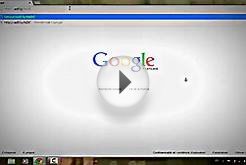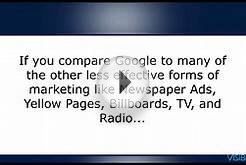Pay-per-click (PPC) advertising and campaigns are the primary way of advertising on the internet. As of May 2009, the three largest players in the market are Google, Yahoo, and Bing.
A PPC campaign lets you determine exactly who comes to your website. You only pay for clicks to your site; if a person clicks on a search engine result, link, or banner and lands on your site (aka PPP pay-for-performance advertising). If the person only sees your link, but does not click through, this is called an impression.
Impressions are "the number of promotional units a person is subjected to" (Cone, S. 2008. Powerlines) You do not have pay for impressions. There are also pricing models based on impressions, which charge per thousand (CPM). Whether or not the purchase of impressions is interesting for you depends on your product and target audience.
Using clickstream analysis, a tracking system will tell you what people do on your site once they arrive through PPC advertising. This information is necessary to manage your advertising, and determine the best ways to:
- obtain quality traffic
- convert visitors into customers
- create action that generates revenue
PPC advertising is based on keyword selection. The entire internet advertising market revolves around choosing the correct search terms and keywords. Well managed PPC advertising will bring traffic that achieves your goal, or 'desired outcome', whether it is to publicise an event or sell goods and services.
Quality is more important than quantity.
‘Quality’ traffic refers to traffic that is well-targeted. This means that the visitors:
- are looking for what you are advertising
- enter the site and look around
- complete a transaction or become a lead (i.e. convert)
- come from countries and regions that you are interested in
- return to visit your site again
Quality traffic will bring you a higher percentage of success, in terms of seeing your visitors complete a transaction, or subscribe to the service that you provide.
Conversion rate analysis will allow you to determine which traffic sources turn visitors into leads and sales.
Conversion rate is the statistic that tells you what percentage of your visitors are converted from visitors into customers/ leads. High quality traffic will deliver a higher conversion rate. Conversion rate is another way of talking about your return on investment (ROI) and acquisition cost-per-visitor.
How to use tracking to evaluate PPC campaigns
A tracking service will allow you to:
- Check how effective clicks are and adjust campaigns accordingly:
- see which keywords and search terms bring more visitors
- learn which advertising copy is most effective
- know which source/ search engine brings the best results:
- at the right price per click (cost acquisition per customer)
- determine conversion rate and set goals
- Accountability: make sure you are getting what you pay for
- source of traffic: country, etc
- how long do they stay, how many pages viewed? Average number of page views from one search engine might be lower than another
We cannot stress how important it is to actively manage your PPC campaigns. Update your keywords, campaigns, vendors, and bids as frequently as possible, as your budget allows.
What can a tracking system tell you about the quality of your traffic?
Low quality traffic may overload your server(s), spike your traffic & frustrate you. More importantly it is a waste of time, money, and resources. It will create false expectations. A tracking system will tell you if / why your traffic is low quality.



![PPC Expert Delhi [7503020504]- Campaign Management](/img/video/ppc_expert_delhi_7503020504_campaign_management.jpg)










 Certified PPC Campaign Management Firm | Pay Per Click Management, SEO, Internet Consulting and Web Design services from Silverback Strategies.
Certified PPC Campaign Management Firm | Pay Per Click Management, SEO, Internet Consulting and Web Design services from Silverback Strategies.